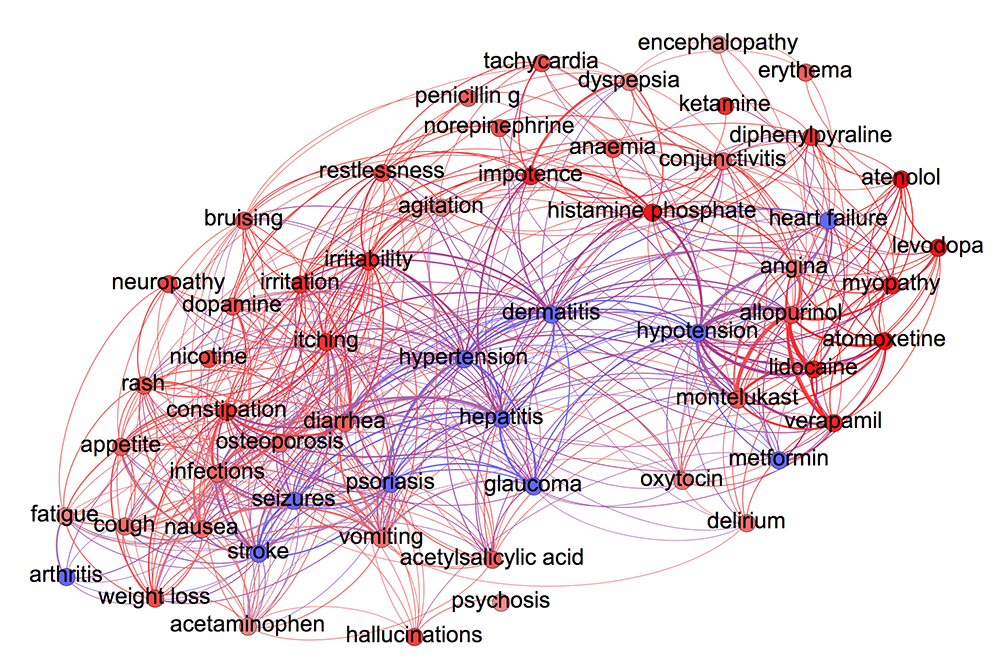
Update: On March 21st, 2016 the paper described below (PMC4720984) was highlighted by Russ Altman from Stanford University in his yearly review as one of 30 important papers of the year in translational bioinformatics.
Using complex networks analysis and social media mining, CNETS researchers from the CASCI team have found that Instagram, a growing social media platform among teens, can be used “to uncover drug-drug interactions (DDI) and adverse drug reactions (ADR).” The work shows that this popular social media service is “a very powerful source of data with great promise in the public-health domain”. The study, "Monitoring Potential Drug Interactions and Reactions via Network Analysis of Instagram User Timelines," supported by an R01 grant from the National Institutes of Health as well as a gift from Persistent Inc., was recently published and presented at the Pacific Symposium on Biocomputing (PSB 2016), in Hawaii. (PubMed, arXiv). The results are based on almost 7.000 user timelines associated with depression drugs which combined have 5+ million posts.
“We build knowledge networks from what people are talking about on their public timelines. This enable us to visually graph and inspect how different drugs, symptoms and even natural products are connected to each other”, says Rion Brattig Correia, a doctoral student in the School of Informatics and Computing at IU Bloomington, who is first author on the study. "The universe of social media provides a very promising source of large-scale data that can help identify DDI and ADR in ways that have not been hitherto possible," added the study’s senior author Luis M. Rocha, professor of informatics and computing, director of the Complex Networks and Systems PhD Program, and a member of the IU Network Science Institute. "Given the large number of users, analysis of social media data may be useful to identify under-reported, population-level pathology associated with DDI, thus further contributing to improvements in population health. Moreover, tapping into this data allows us to infer drug interactions with natural products – including cannabis – which constitute an array of DDI very poorly explored by biomedical research thus far."